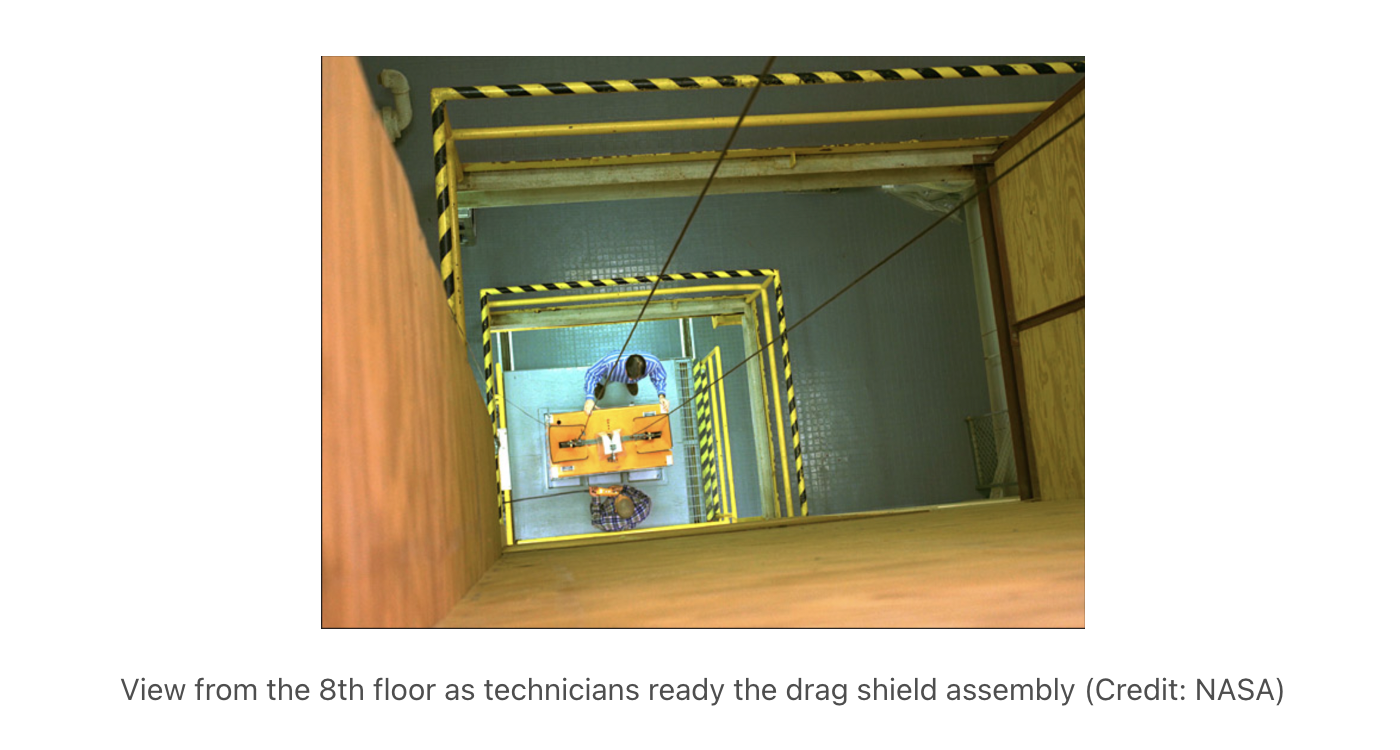Educator Onboarding
LEO Art Challenge Workshop
ICE 2019: Satellite Tracking, Orbits, and Modeling
SEEC 2019: Satellite Tracking, Orbits, and Modeling
Workshop:ITEC Trek-a-Sat
Workshop: 2018-01-27 Yerkes
Workshop: 2017-10-28 Carthage-Yerkes Electrostatics in Space
Workshop: 2017-06-29-BTCI-Life in Space!
Workshop: 2017-03-11 Yerkes
Workshop: 2017-02-07 SEEC
Workshop: 2017-01-28 Yerkes
Tools You Might Use
Educational Learning
Standards
Documentation
Bringing Space to the Whole School !
Topic outline
-
The Focus is bringing converging disciplines in space education to an entire school
-
Bringing Space to the Whole School !
Published August 2024Age Group: 3 -14 yrs
Duration of Event: a full-year, all-school experience
Contributors or Authors
Lisa Warner -Band Teacher, St. Bruno Parish School, Dousman, WI
Sydney Simon - University of Chicago Intern with NSS
Emi Fung - University of Chicago Intern with NSS
Frances Dellutri - Director of Education, National Space Society
Credit: Canva AI generated image
Short Summary
Ms. Werner, a band teacher at a small Catholic school in Dousman, Wi, moved out of her comfort zone and took advantage of a microgravity workshop. The outcome of the workshop was the possibility to take a 0-g flight and test her student designed experiments in various degrees of microgravity. After various iterations of student experimental designs, proposals and flight plans, Ms. Werner and her fellow 0-g flight teachers and their experiments each experienced 11 minutes of weightlessness during a series of two-hour flights aboard the ZERO-G G-Force One Aircraft. They floated in free-fall as 30 parabolas were executed during the flight with each parabola lasting about 22 to 24 seconds. The experiments were tested during the 22-24 second intervals.
Her excitement stirred a whole-school multi-disciplined event that spanned several months in planning for the school event, designing experiments, meeting with colleagues in other disciplines and finally analyzing the experiment designs. A fascinating outcome was using the data to pull from a similar experiment conducted by Mozart and resulted in a composition that was performed during the May 2022 school music concert. Follow along on her amazing journey!
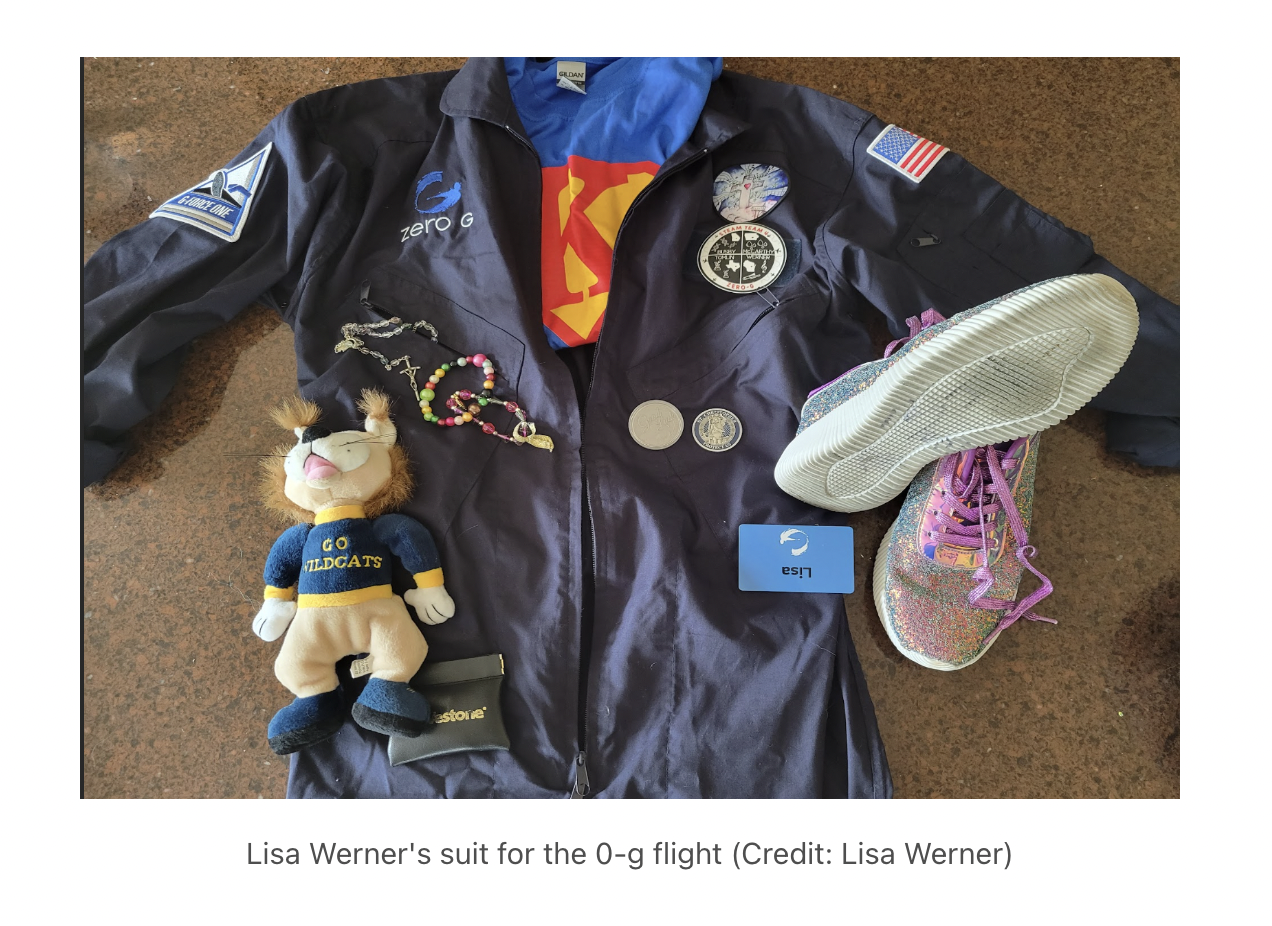
Goals of the Lesson for the Teacher:
To showcase the success of St. Bruno Parish School, in Dousman, WI to build a whole school community curriculum that focused on outer space.
To chronicle the journey of this program from planning to data analysis.
To provide a record of how other teachers might incorporate the talents of their colleagues to collaborate on a space related program that suggests a life changing impact on students and teachers.
For the student:
To bring an awareness of the connection all disciplines have with living and working in space.
To bring an interactivity between the student and the discipline in determining the connection to space.
To spur curiosity, innovation, and critical thinking opportunities when connecting different learning disciplines with living and working in space.
Topics/key words covered in the lesson-
Interdisciplinary, cross- discipline, music, science, english, art, convergent, convergent disciplines, transdisciplinary, multi-discipline, Kundt’s Tube, Mozart, wave motion, engineering
Background:
The information in this SpacEdge Academy Lesson gives an example of a school-wide curriculum in different disciplines that converged around the focus of living and working in space.
This program follows the suggestions of the following White House Report:

White House Report; Convergence Education: A Guide to Transdisciplinary Learning and Teaching - Office of Science and Technology Policy, November, 2022.
Interagency Working Group on Convergence Identified as one of four pathways with cross-cutting approaches to achieve the vision and goals of the 2018 Federal STEM Education Strategic Plan, engaging students where disciplines converge seeks to make STEM more meaningful and inspiring to students by focusing on complex real-world problems and challenges that require initiative and creativity. Under the IWG (Interagency Working Group) on Convergence (IWGC), agencies are working to foster educational opportunities that advance innovation and entrepreneurship, where the convergence of ideas at the intersection of different fields gives rise to new technologies, including through competitions, challenges, and educator upskilling opportunities that engage participants in mission-focused areas. The efforts of the IWGC are organized around three central objectives, as outlined in the 2018 Federal STEM Education Strategic Plan: (1) Advance Innovation and Entrepreneurship Education, (2) Make Mathematics a Magnet, and (3) Encourage Transdisciplinary Learning.
This project was the brainchild of Ms. Lisa Werner, the St. Bruno Parish School band director who had attended an NSS led workshop on microgravity and experiments in space. Ms. Warner was further selected to test her student-led experiments on a microgravity airplane flight. This SpacEdge Lesson is the product of her activities in her own classroom and her encouragement with the faculty at St. Bruno Parish School to build a school-wide curriculum that connected with space topics.
Educational Standards:
Next Generation Standards (NGSS), Common Core State Standards (CCSS) Initiative and National Association of Music Education Standards support the efforts shown in this SpacEdge course.
More information can be seen in the file below: Educational Standards Supporting the Bringing Space to the Whole School Course.-
A list of NGSS, CCSS, and Music Standards are included in this file
-
A Few Words from Lisa Werner:
"One of the most interesting ways this project impacted the lives and motivation of my students is by the example I set for them. After attending the Embedded Teacher Microgravity Workshop on October 8 and 9/21, I shared with my own children how much this experience was out of my comfort zone. It is intimidating to sit amongst so many accomplished science and physics teachers from around our country as a local middle school band director. To be able to join in the conversations and be treated as an equal and not ‘that specials teacher over there’ was incredibly powerful to me. If I can inspire the students in my school, the community, and neighboring schools/communities to fearlessly embrace going after opportunities that really stretch and challenge them, then they will develop an important skill for their future success! I hope I gave the same gifts to my students. I know there are very few students who will become professional musicians, but it is my hope that the connections they make in my band class will shape who and what they become."
Professional Development: Ms. Werner has taken advantage of many professional development opportunities and is a recipient of various accolades.
A list of Ms. Werner's accolades that have resulted from her initial foray into the microgravity workshop follows:
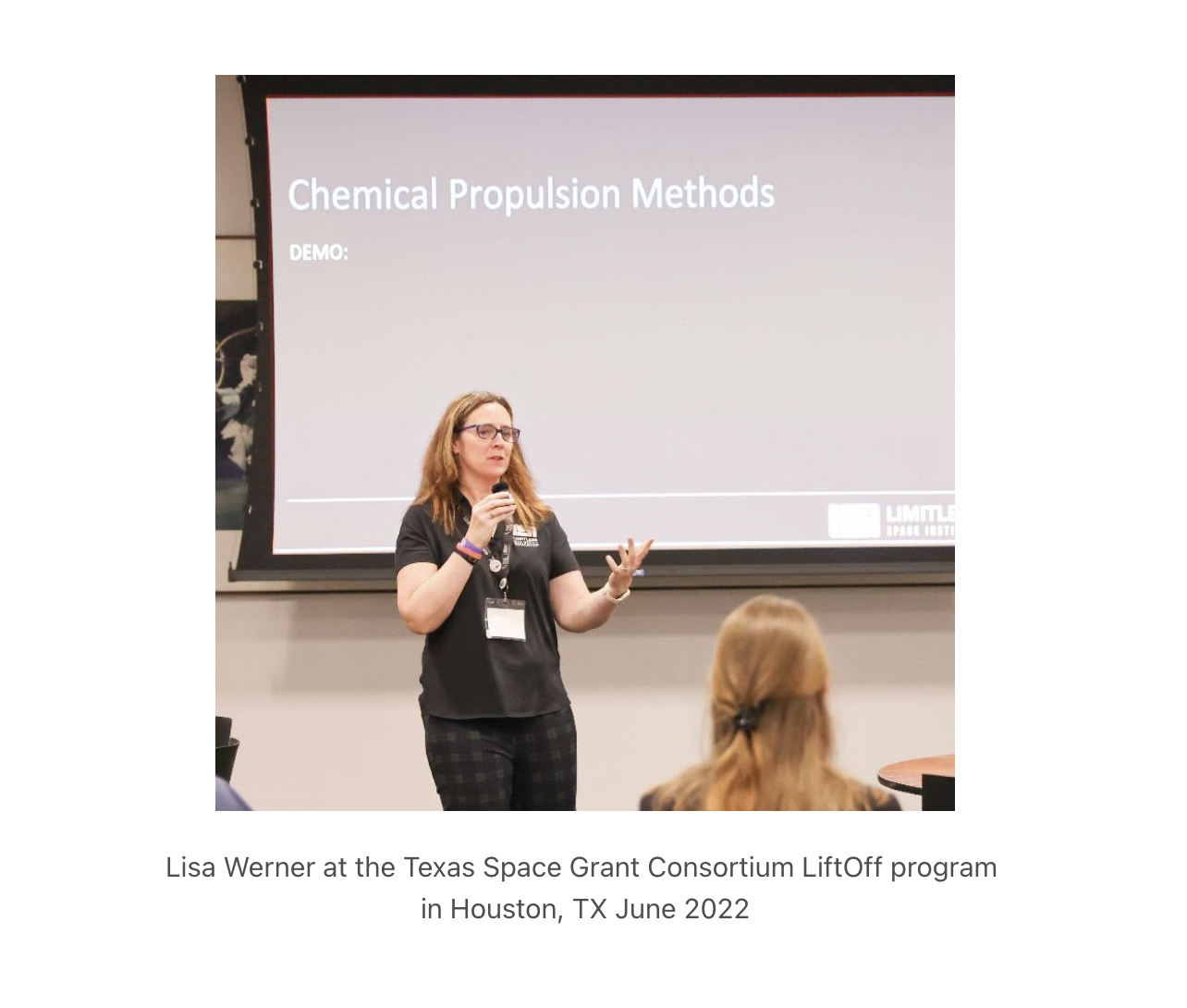
Presented at...
- Texas Space Grant Consortium LiftOff program: Houston, TX June 2022
- 2022-2023 Wisconsin Space Grant Consortium Embedded Teacher Program
- 2022 Wisconsin Music Educator Conference October
- Space Exploration Educator Conference: Houston, TX February 2023
- Space Foundation International Space Symposium: April 2023
- Space Exploration Educator Conference: Houston, TX on "Exploring Light Intensity and Distance Relative to Interstellar Travel"
- Champions of Space 2024: "Limitless Resources for Out of This World Learning"
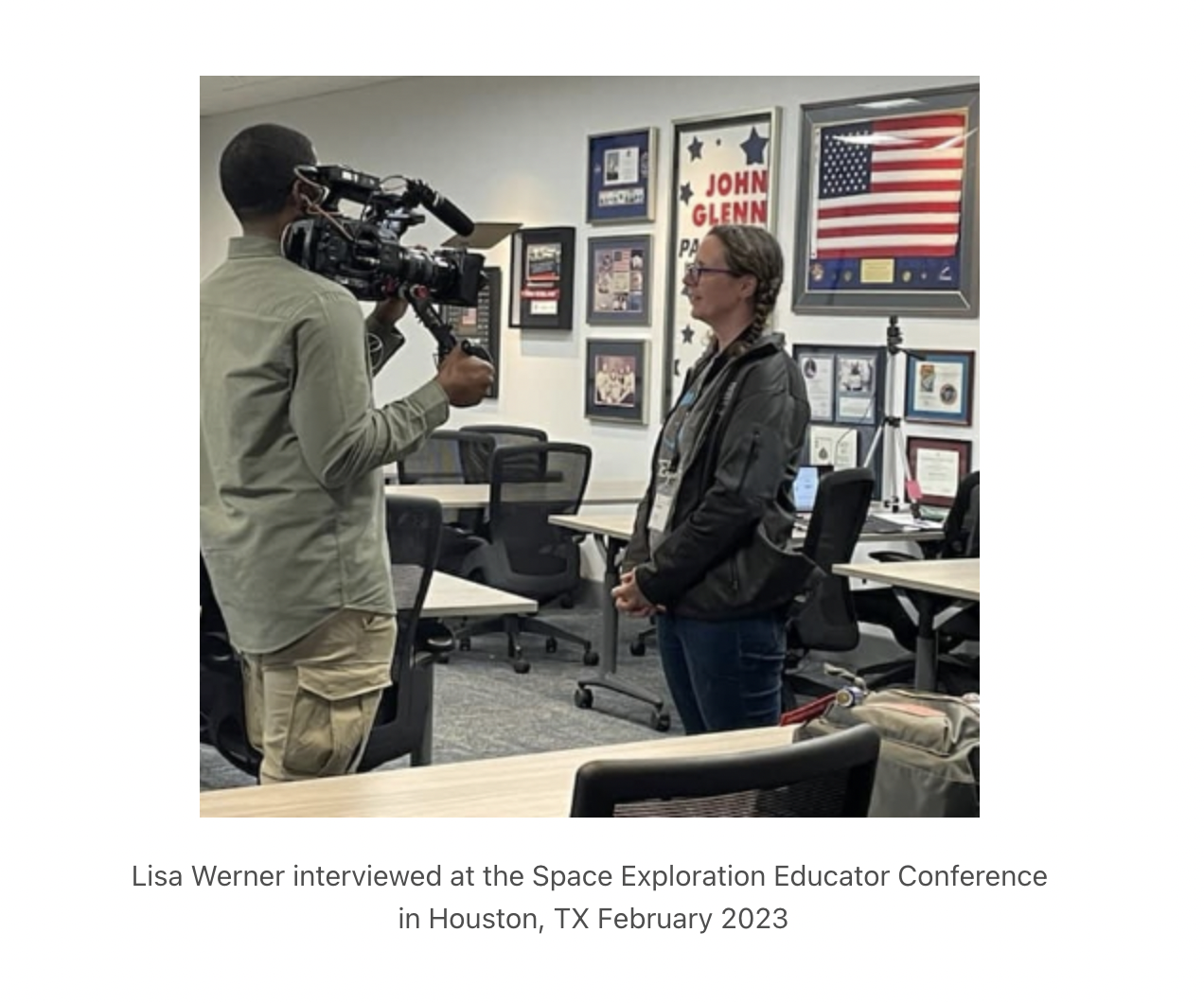
Selected as...
- Limitless Space Institute Limitless Educator Program inaugural member: 2022-present
- Space Foundation International Teacher Liaison 2023-present
- Solar System Ambassador: NASA and the Jet Propulsion Laboratory 2023-present
- 2023 WELS Middle School Honors Band Conductor: featuring students from all over the Midwest
- 2023 Archbishop's Catholic Schools Dinner - St. Bruno Choir Students
- 2024 NOAA Teacher at Sea
- Audio monitoring kit recipient: participant in citizen science, a NASA program
- 2024 Grosvenor Teacher Fellow through a partnership between National Geographic and Lindblad Expeditions
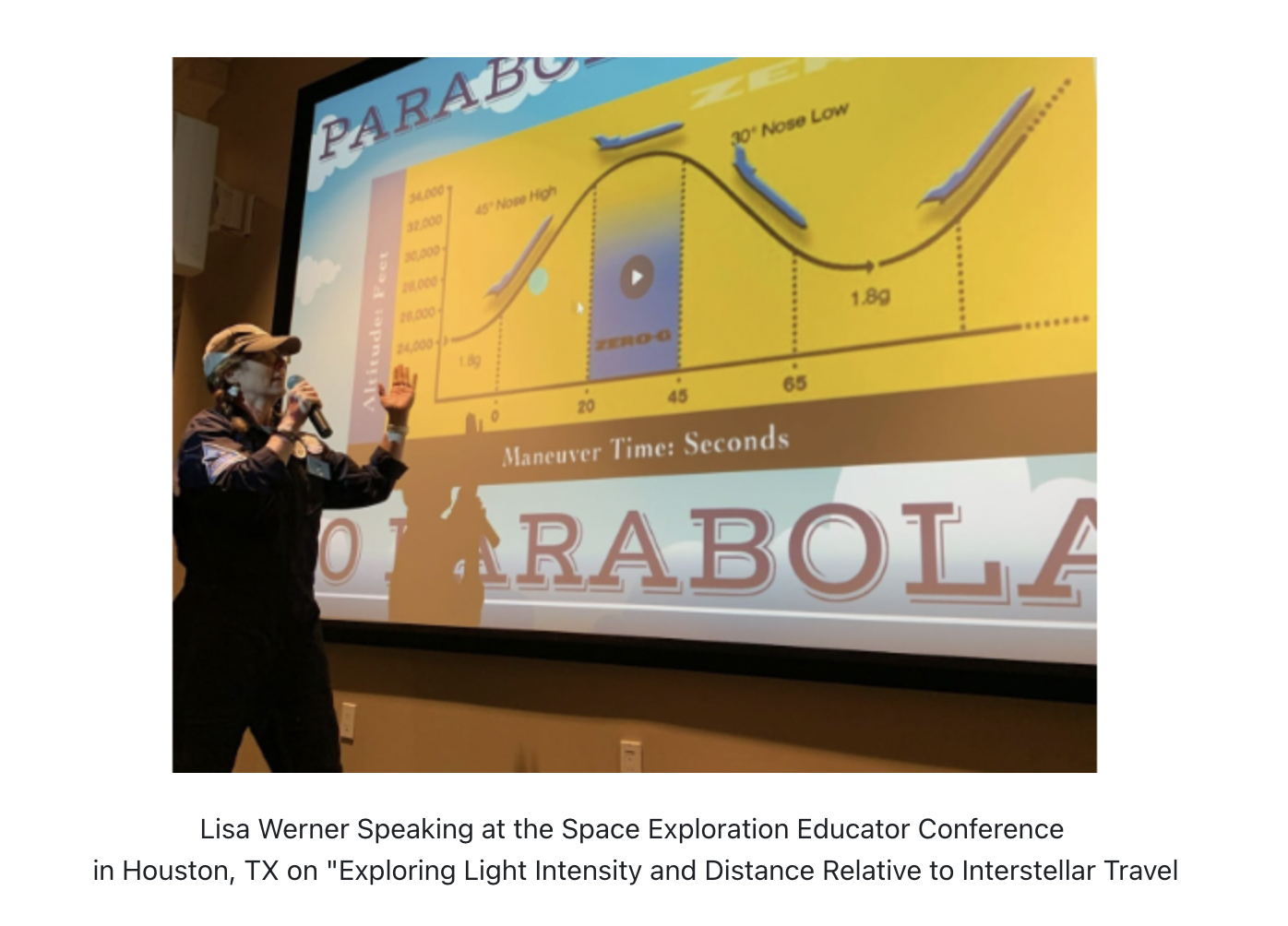 Awarded...
Awarded...- 1st place in the Lowell Mason Music Education Advocacy Nation Competition January 2023
- 2023 Wisconsin Kohl Fellowship recipient
- National Association of Music Merchants Best Communities for Music Education (2022, 2023, 2024)
- 2023 Henry Ford Innovation Nation Teacher Innovator Award Grand Prize winner
- Grammy Music Educator Award Quarterfinalist
- 2024 Music For All Advocacy in Action Award for Student Recruitment, Engagement, and Retention
- 2024 AIAA grant for Databot sensors and Sphero Indi robots
- 2024 AFA Educator Grant for databots
- Legacy candidate nominee for Grammy Music Educator Award 2024
For more information on the accolades awarded to Ms. Werner and St. Bruno Parish School, refer to this webpage.
-
These are the survey questions Ms. Werner gave her St. Bruno students the week before attending the September 2021 Embedded Teacher Workshop at Carthage College, Racine, WI, USA. This was the first step in the journey to learn about microgravity.
Q1: How interested are you in learning about space in school? Students were given a scale of 1-10, with 1 being ‘not my favorite science unit’ and 10 being ‘I love learning about it.’
Q2: How much do you know about space? Students were given a scale of 1-10, with 1 being ‘not much at all’ and 10 being ‘We study it a lot in school/on my own.’
3. What questions do you have about what life is like in space?
4. If you were to design an experiment having to do with music in space, what would you be curious about?
-
Moving Towards a Whole School Initiative:
Ms. Werner pushed the entire school to get involved with space education through a variety of lesson plans integrating a wide range of subjects. Below are samples of assignments used to during this whole school initiative.
Integration of ELA/Literacy Activity: Description: Suggested Grades: Mission Name Project In this assignment, students were asked to design a mission name for the set of experiments. They could either use a Catholic entity or an acronym. Students would then write a persuasive paragraph about why the name they came up with would be a good fit for the set of experiments. 6-8 Constellation Project Students were asked to create a constellation and then write a story about it. 6-8 Food Constellation Composition Students were asked to create a constellation about food and compose an 8-measure melody to reflect that constellation. 6-8 Integration of Math Activity: Description: Suggested Grades: Probability Exercise An opportunity for students to learn about probability through ‘chance music.’ 4-8 Integration of Social Studies Activity: Description: Suggested Grades: Follow the Drinking Gourd Students learn about the role of astronomy in history through connections with singing and noting constellations to give directions for escaping slaves. 3-5 Integration of Visual Arts/Music Activity: Description: Suggested Grades: Sending Postcards to Space Please refer to the last section of this lesson for more information! All Mission Patch In this lesson, students learn about what mission patches are and how they are created. Then, they are asked to create their own. All Music Composition Project Students use knowledge about sound waves and how they behave at different frequencies of their instruments 4-8 Integration of Physical Education Activity: Description: Suggested Grades: Train like an astronaut Students learn about exercises done in space by astronauts and evaluate why exercise is important to maintain certain body systems in space. They can then try different exercises for themselves. All Sample exercises Some other exercises students can try. All
Integration of Science Activity: Description: Suggested Grades: Astronomy/constellation assignments Students learn about sky charts and constellations 4-8 Kundt Tube Another possible opportunity for students to study sound waves. 6-8 Music Harmonics & Intonations This assignment encourages students to explore how sound works and what intonation is. They learn about intonation and how it will affect our playing. 6-8 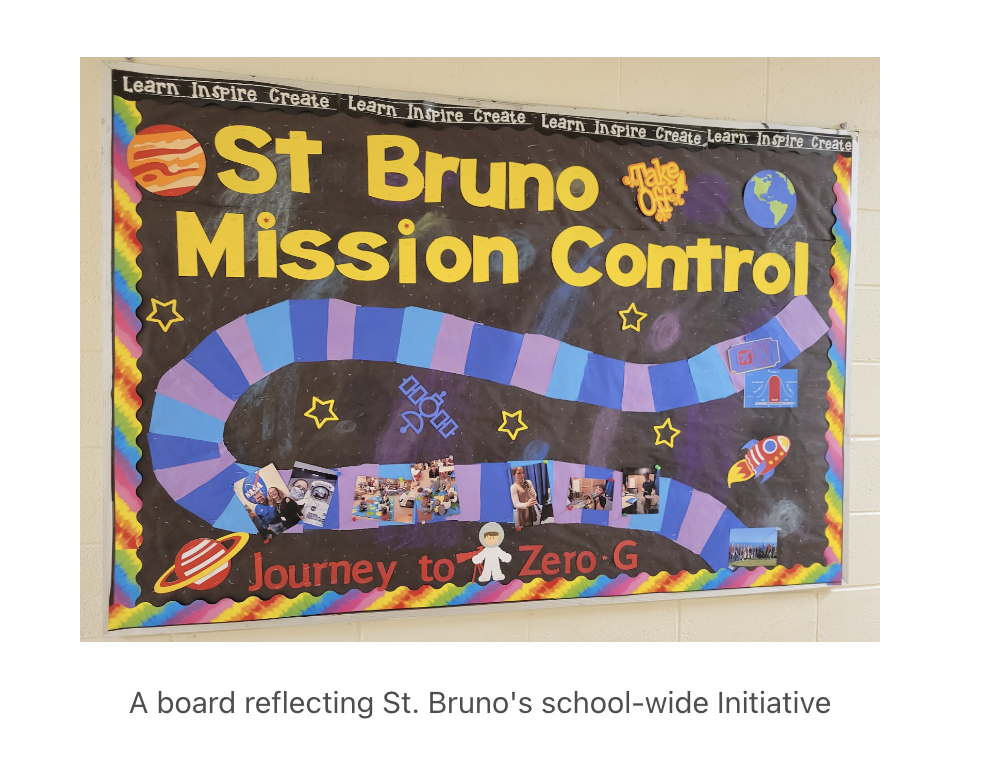
-
In this assignment, students were asked to design a mission name for the set of experiments. They could either use a Catholic entity or an acronym. Students would then write a persuasive paragraph about why the name they came up with would be a good fit for the set of experiments.
-
Students were asked to make up a constellation and write a story about it.
-
-
Beyond Ms. Werner's assignments, the following are possible additional topics of study for students.
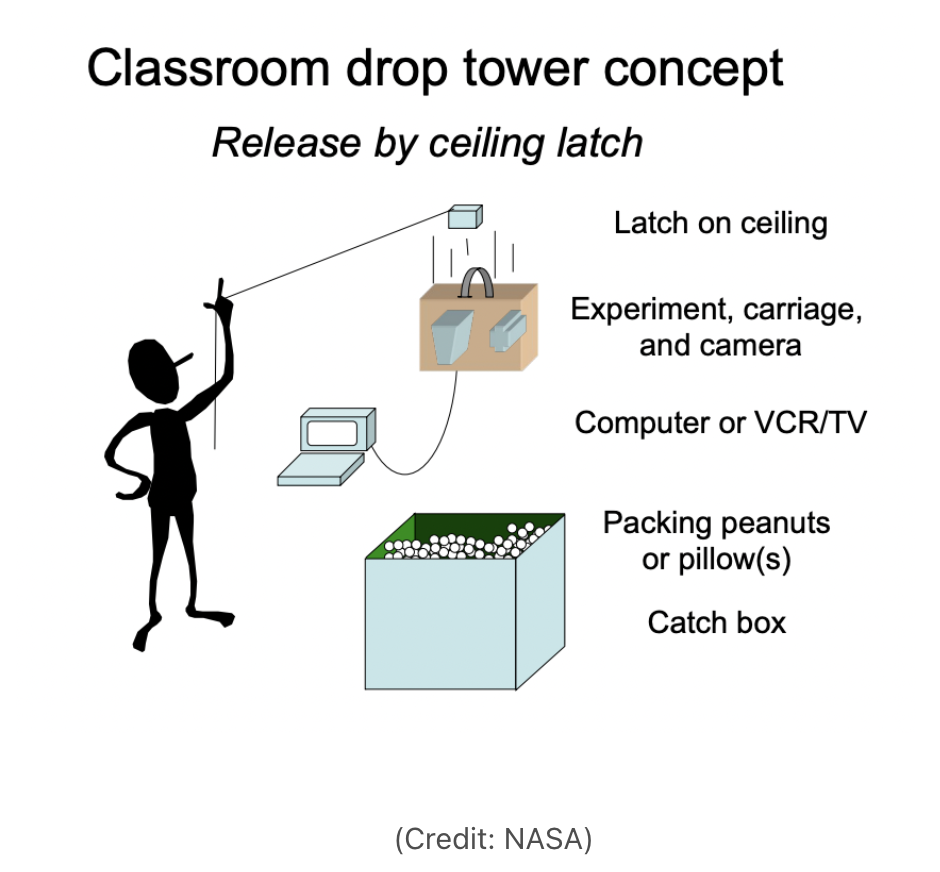
- Mimicking Microgravity Conditions in a Classroom on Earth
Objects in a free fall state are said to be weightless and provide an interesting study on microgravity conditions. In order to achieve this state in the classroom, refer to this resource from NASA. This is an amazing resource for teachers and other educators with instructions on creating a microgravity 'drop tower' and other experiments and fun games for students!
In addition, experiments can be sent to professional drop tower facilities provided by NASA’s Glenn Research Center. The NASA Glenn 2.2 Second Drop Tower is one of two drop towers located at the NASA site in Brook Park, Ohio.
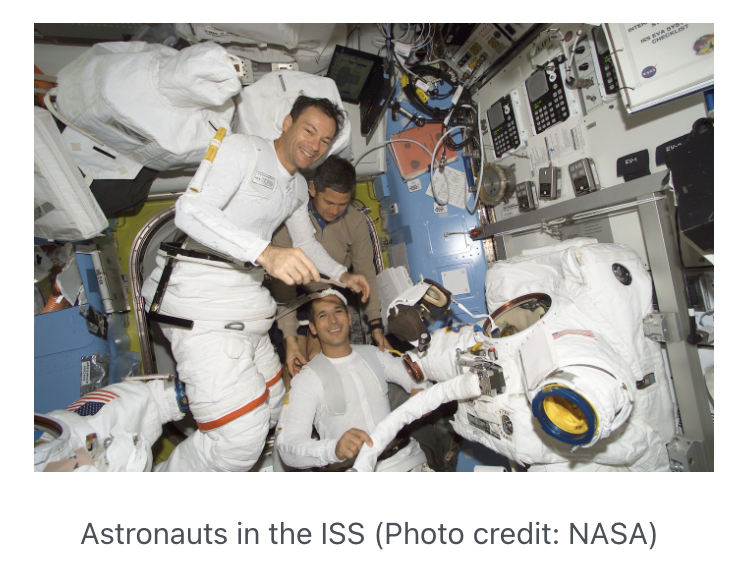
- At Home in Space: How astronauts adapt to life on the ISS
This article provides a look into how crew members live together and create a shared culture. Specifically, it explores how Space provides a unique environment that brings different cultures through technical knowledge and team collaboration.
- "Space archaeology" : ISS Archaeology
ISS Archeology is a project aimed to understand the “microsociety” aboard the International Space Station given the multigendered, multiethnic, multinational, and multilingual nature of the crew. Marking off one-meter areas of the ISS (Placed in leisure locations such as the galley table, workstation, and EXPRESS racks) to document with daily photos to study how spaces are used, this project utilizes databases of all objects sent to the ISS to create a 4D digital model of a space lab, tracking patterns of movement of astronauts and objects over time. Navigate to their site to learn more.
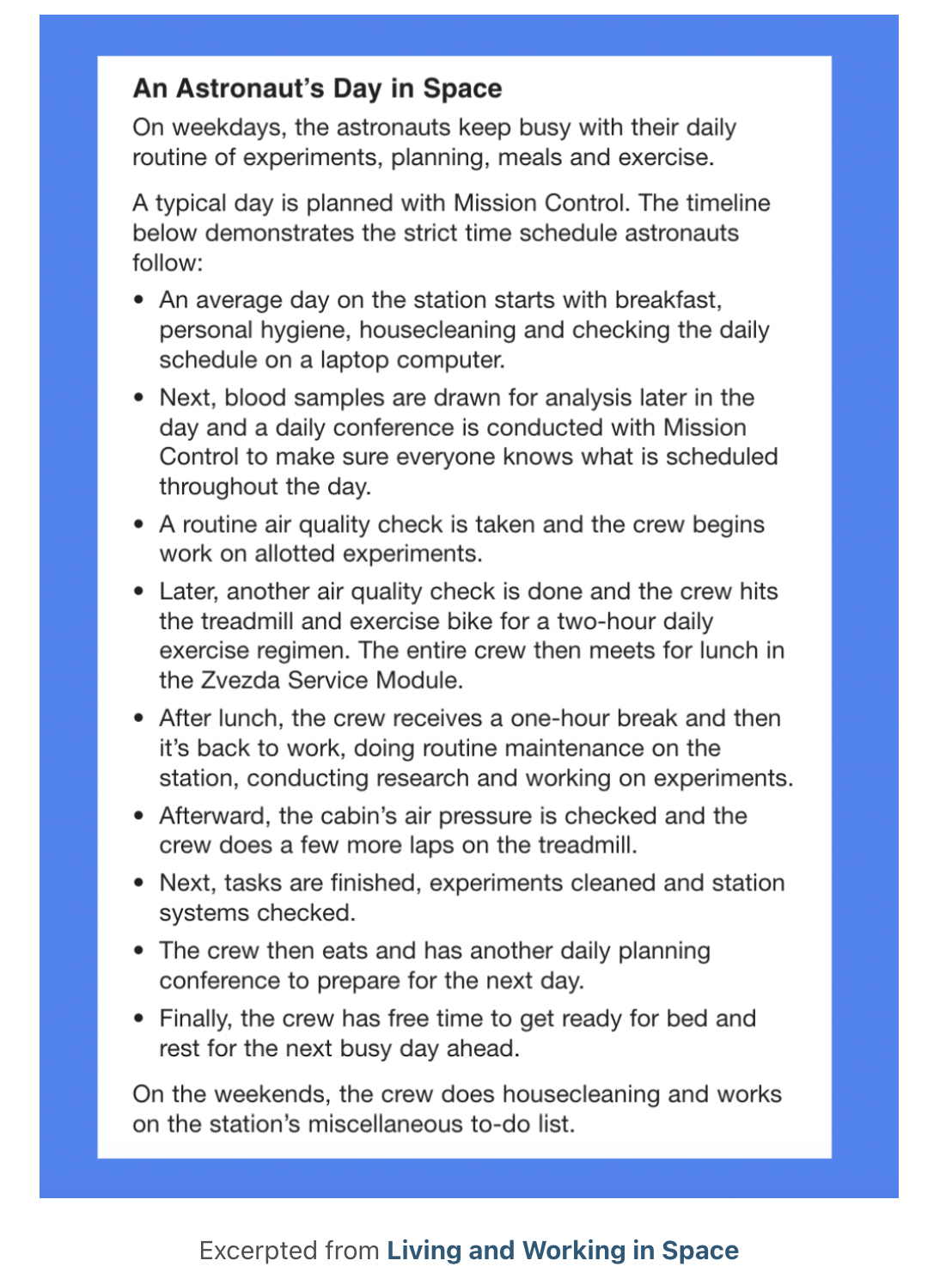
- Living and Working in Space: Click here to learn more about the daily exercise regimen of astronauts.
- Physical Activity in Space: This resource has more on the importance of physical activity in orbit
Protecting muscle mass, bone density, and cardiovascular health: Bones and muscles don’t have to support the weight of astronauts’ bodies in microgravity. In order to avoid bone and muscle deterioration from prolonged periods of time in zero-g, astronauts must exercise while in orbit. In addition, without proper exercise, the cardiovascular system may weaken as the heart doesn’t have to work as hard as it does on Earth to counteract gravity when pumping blood around the body and up to the head.
Effects of weightlessness on the human body: Despite rigorous exercise regimes, astronauts lose an average of 1% of their bone density per month in space (equivalent to what an average elderly person on Earth would lose per year). However, astronauts’ bone density gradually returns to normal after returning to Earth.
ARED: Advanced Resistive Exercise Device - Robert Thirsk, (Credits: CSA, NASA)
TVIS: Treadmill - Robert Thirsk, (Credits: CSA, NASA)
- Exercises students can do
Astronaut Training: Exercise Challenge - Various activities and connections to physical fitness in space. (Credit: Chabot Space and Science Center)
Crew Strength Training - Bodyweight exercises and connections to bone density and muscle fitness in space. (Credit: ESA), age range: developed for up to 14 yrs
Train Like an Astronaut: Adapted Physical Activity Strategies - Offers seated variations and activities at different levels. (Credit: ESA), age range: developed for up to 14 yrs
Building an Astronaut "Core" - Lesson plan for core exercises and connections to physical health in space. (Credit: ESA), age range: developed for up to 14 yrs
For additional exercises and lesson plans, explore ESA's Mission X - Train Like an Astronaut site (Grade levels: 3-7). In addition, NASA offers this website: Train Like an Astronaut (Grade levels: 5-8, 9-12) with more exercise plans.
Below are some additional free online resources for students to explore!Games/Site Description Suggested Grades Play | NASA Space Place – NASA Science for Kids Fun games with clear educational connections. Includes online games as well as project ideas for the classroom or at home.
K-5 Space Games | PBS KIDS Colorful games with beloved characters perfect to get kids excited and asking more questions about space. K-5 ESA - Space for Kids - Games Engaging and fast-paced games suitable for many ages. Also offers various language options. K-6+ Space Learning Games • ABCya! Games centered around other planets and asteroids suitable to get kids curious about space. K-6+ SCIGames Puzzles and brain-teaser style games suitable for older kids as well. 3+ -
Golden Record Project
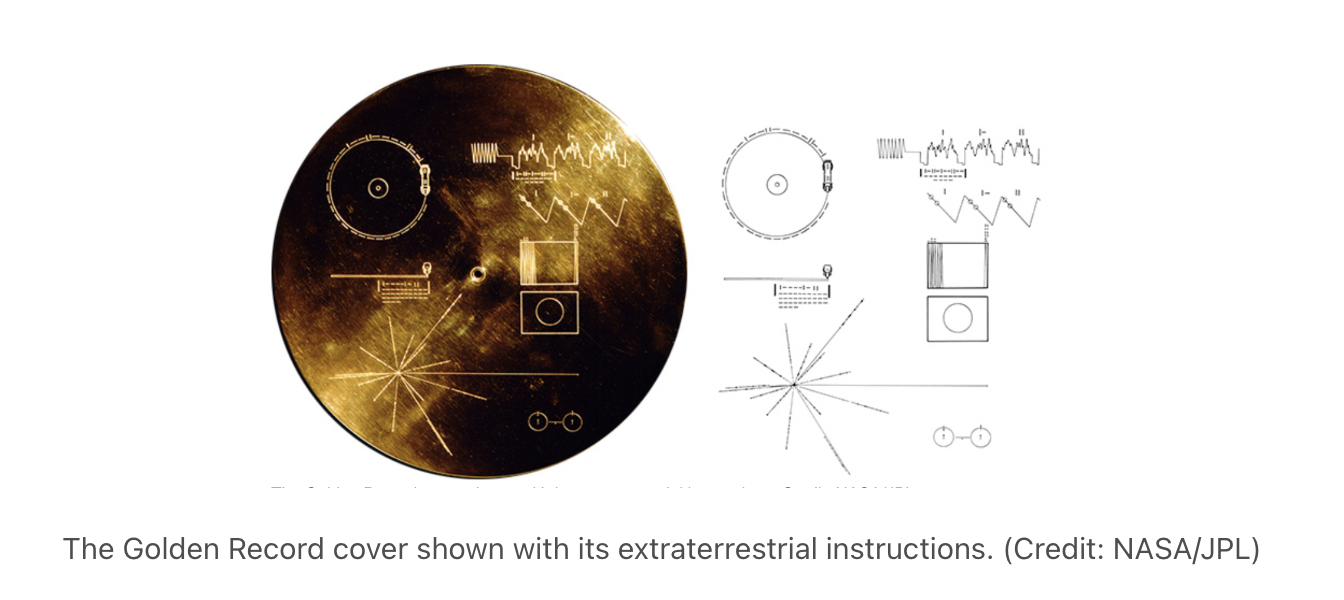
The Golden Record was created with the intention of being a time capsule communicating the story of Earth to extraterrestrials. This message is immortalized on a phonograph record aboard the Voyager. The record is a 12-inch gold-plated copper disk holding sounds and images carefully selected to portray life and culture on Earth.
Please visit NSS SpacEdge Academy course on “Interstellar Space” to explore more about the role that the Golden Record plays on the 40+ year journey of the still traveling Voyager Mission!
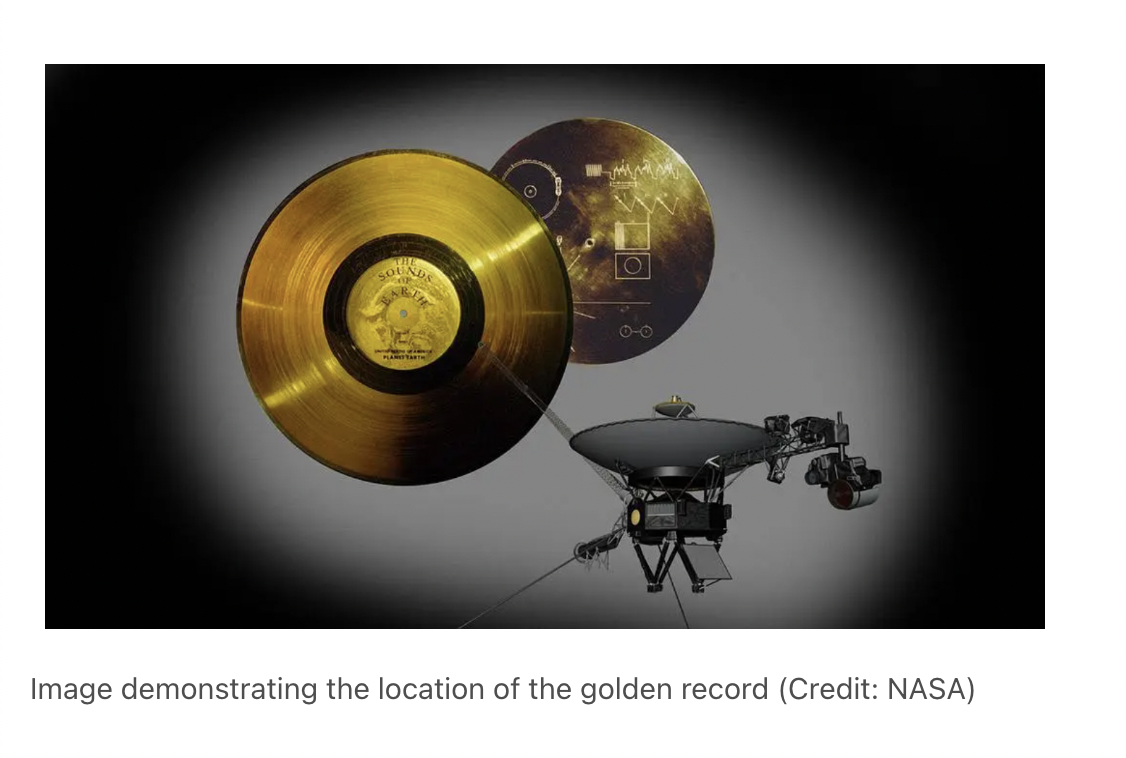
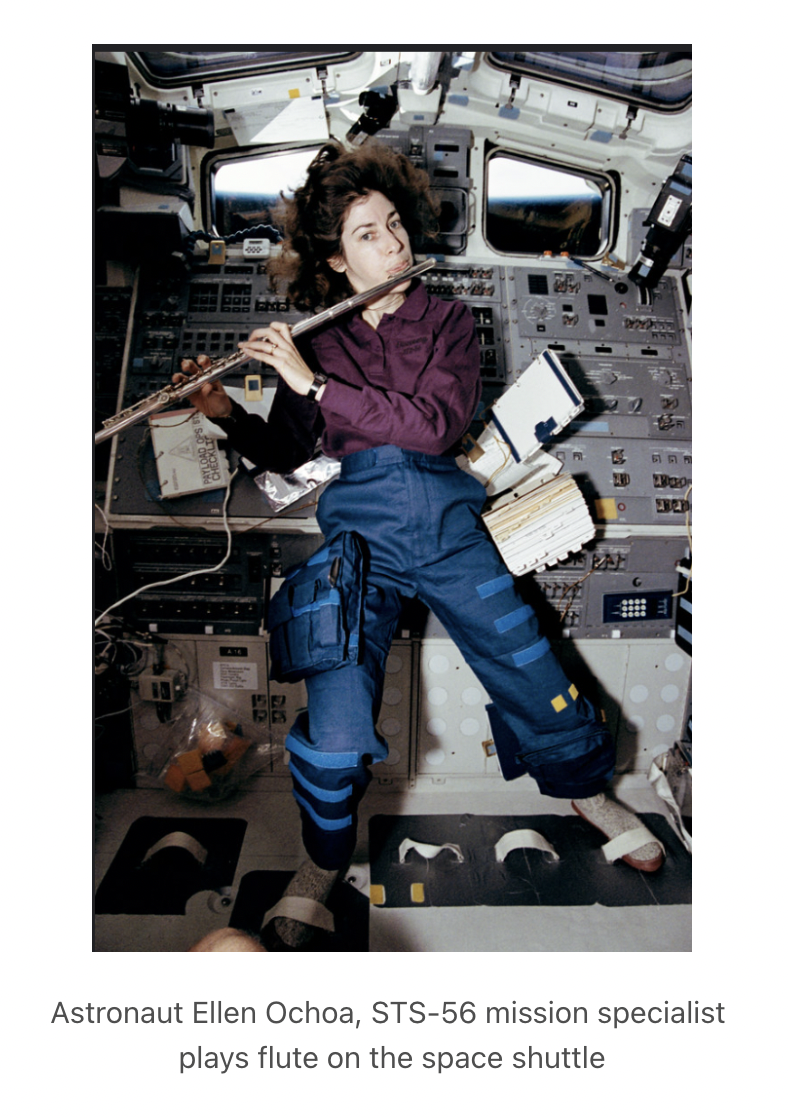
How Space has Inspired Music:
This article follows the story of Nigel P. Meredith, a space weather research scientist with the British Antarctic Survey, as he collaborates with artists and audio engineers to convert the frequencies of plasma waves into audio files and feature these in performances merging art, science, and technology. Explore more here: Turning the Sounds of Space into Art.
NASA and the Role of Music in Space/on missions:
Music can exist in space ships as sound is able to travel in the air within the space ship. However, the force required to play instruments affects how astronauts interact and react to the instrument. Navigate to this article: What actually happens when you play a musical instrument in space? - Classic FM to learn more about the accommodations astronauts make to play instruments in space.
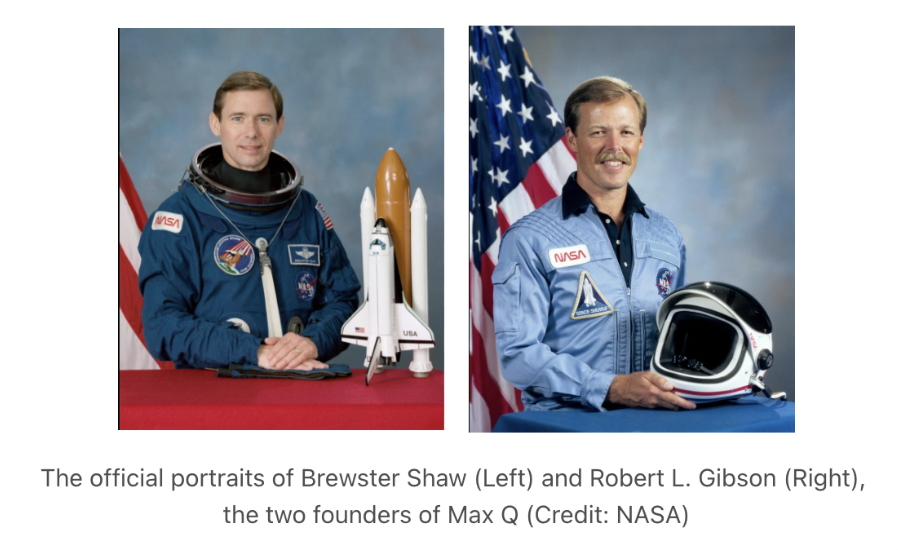
NASA Astronaut-Musicians:
Max Q is a cover band consisting entirely of active-duty astronauts for members. Originating as an effort to raise morale in NASA following the January 1986 loss of the space shuttle Challenger and its crew, Max Q now continues as a testament to the uplifting nature of music as well as the many talents of astronauts. Read more here: Max Q.
-
The following are Lisa Werner’s responses:
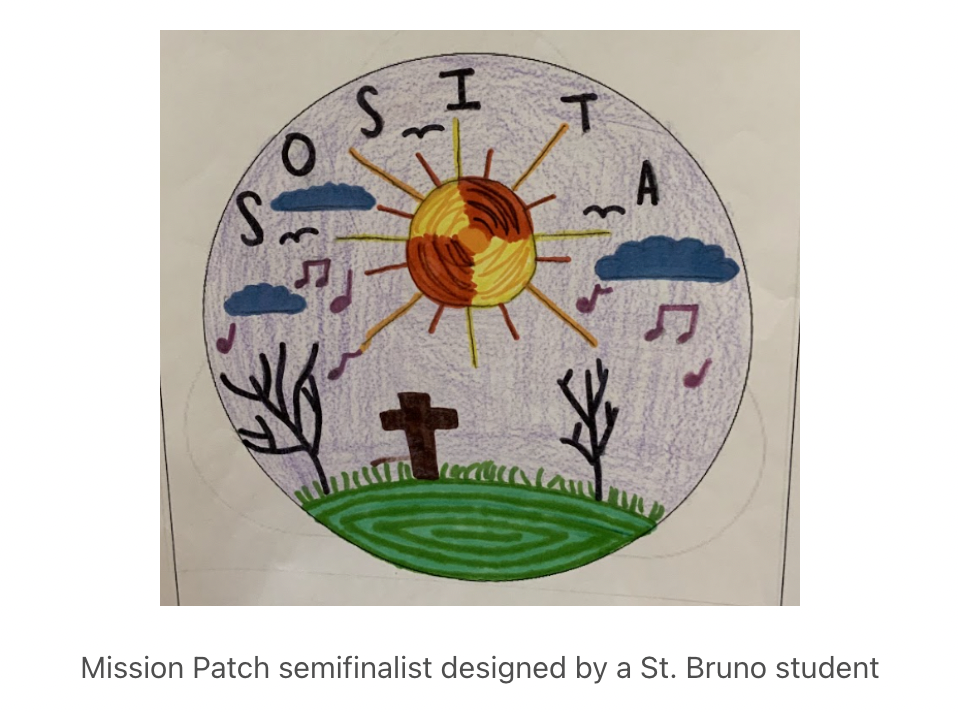
1. Was there a name that St. Bruno’s Parish School used for this project?
"Mission S.O.S.I.T.A (Sounds of Space In the Air): Taking Music to Zero Gravity - It was named through a competition that I worked with the English Language Arts teacher to facilitate in which the middle schoolers were introduced to the naming of Apollo, Artemis, etc. and they had to write a persuasive essay on why the name they selected should represent our mission.”
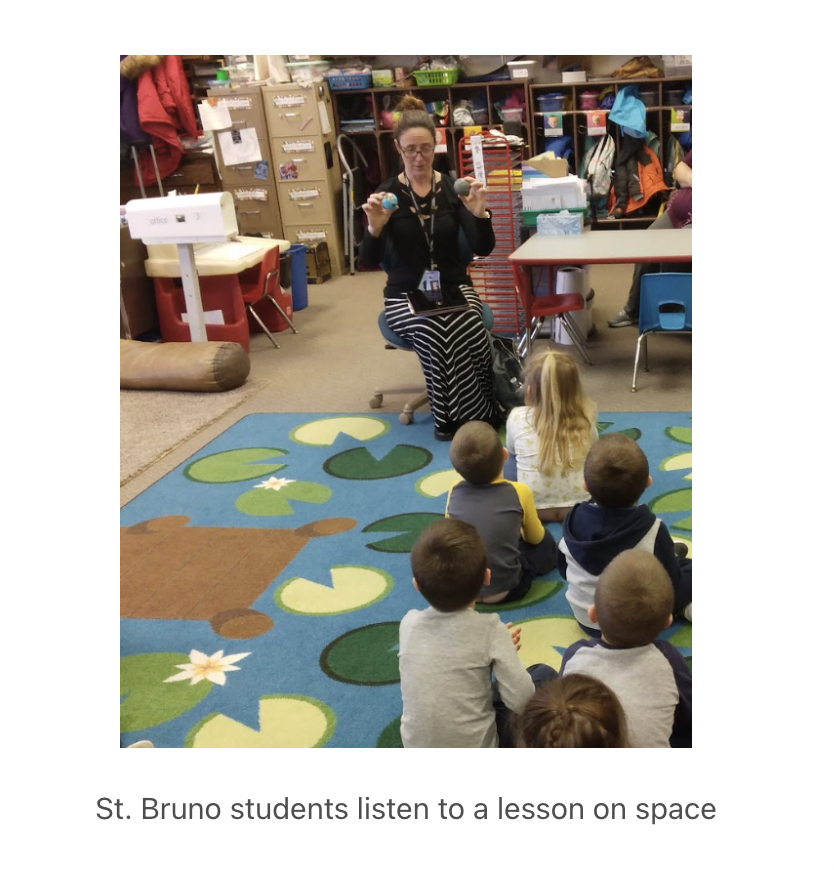
2. Was the age Levels for the lessons K- 8 grade (Ages 5 - 14 years)?
"We actually brought the experiments and mission patch design all the way down to the 3-year old preschool classes housed in our building."
3. What was the number of students at St. Bruno's Parish School and the number that took part in the program?
"We had 103 students in the building in 2021-2022, and all 103 students participated in the program."
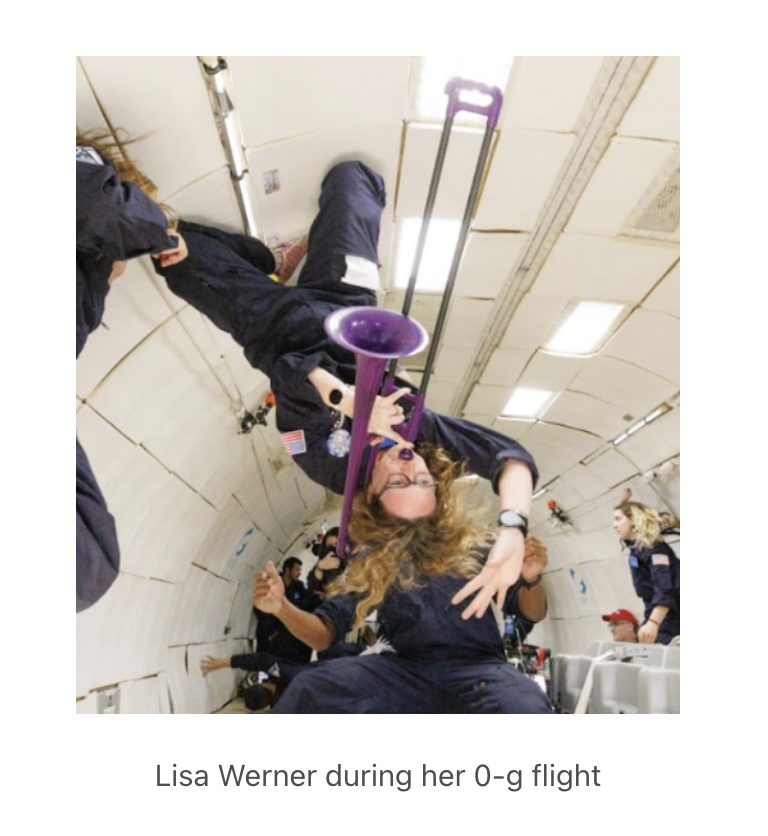
4. How did you get this initiative going? Did you have a conversation with your principal, was it among the teachers, school board? What was the path of organization and the challenges?
"I sat down with my principal and discussed how we could make this an all-school, full year experience so that every student would be a part of our program. Once I was accepted for the 0 g flight, I had another meeting with my principal and got the go ahead to incorporate this into all subjects and grade levels. From that point on, I met with my principal and our marketing director to plan how to go ahead with each step of our plan. The main challenges were really time- many of the teachers were very busy with all of the other aspects of their job that take time - testing, required school projects, so I tried to make it as easy as possible by going into each classroom for the activities I wanted to lead with each class. Our other challenges were mainly getting media to take notice of such an incredible opportunity that I was given to share space education with students of all ages through this program."
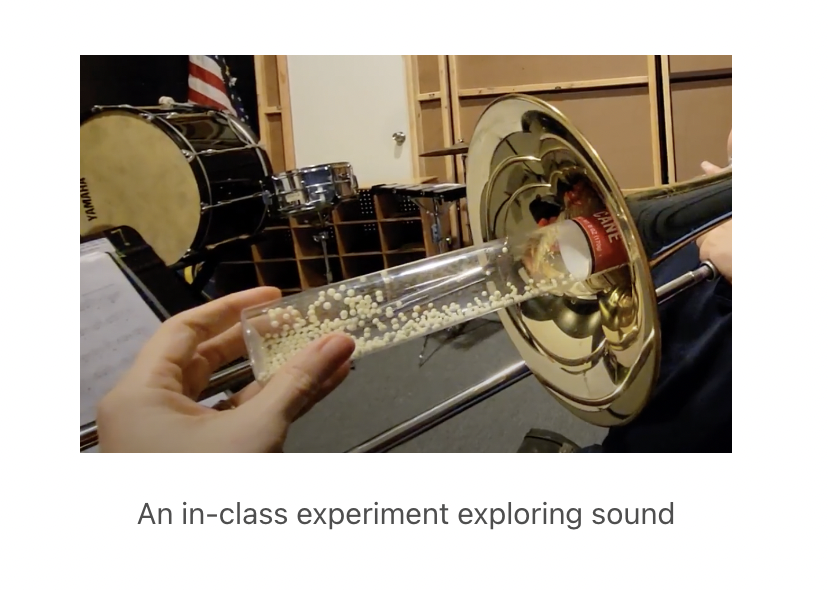
5. What were the goals/hoped for benefits?
"My main goal was to show students the connections music has with all subjects. I also showed them that space has that in common with music - it also applies to all subjects! I wanted students to see that hard work pays off. I also wanted the students to feel ownership in this experience and see that they can accomplish so much more than they think they can!"
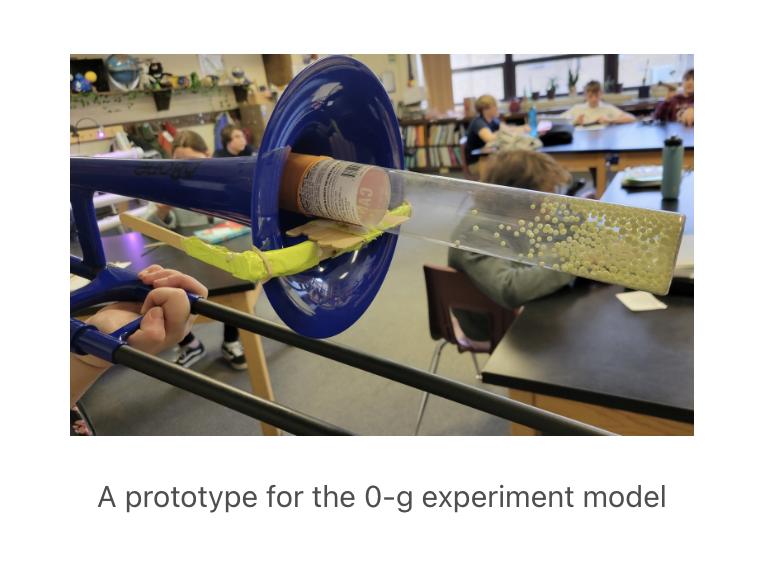
6. What were the outcomes?
"Students were unbelievably engaged and inspired by this project - everything from recommending additional experiments for flight, continuing to evaluate our engineering challenges even after we found successful solutions to our problems, and even seeing more kids dressed as astronauts for school dressup days....students were so inspired by learning about space. This excitement and interest in space education continues to this day - 2 full years after this program ran"
7. How did you juggle band practice and then spending the student time researching, testing, and designing experiments?
"That was challenging, at first. I only have a one-hour practice with the band students each week. However, students were so excited about the experiments that we were doing, they actually spent MORE time practicing their instruments to keep moving us ahead musically. I did not expect that to happen. The students did a great job of working hard on their music and helping us to get our jobs done with engineering and practicing our experiments, as well. The middle school STEM teacher also allowed me to come into her classroom to do some of our more classroom-centric learning and designing, as well, as it fit well into her curriculum, too."
8. How did you engage in media coverage?
"School marketing director informed media - Coverage was local and also in the city of Milwaukee, WI news media."
Additional Points to Consider in Such a Project:
Lisa Werner compiled additional thoughts and comments on her project which can be accessed in the file below:
-
Send a Postcard to Space through NSS Supported Blue Origin Club For The Future initiative!
Visit: SpacEdge Academy Postcards in Space Course


